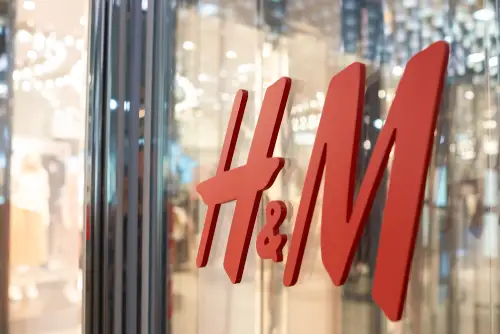Fast fashion has gained immense popularity in recent years, driven by the desire for trendy, affordable clothing that mirrors the latest runway styles. It relies on partnerships with clothing manufacturers to quickly produce and distribute trendy garments. This industry thrives on quick production cycles and low-cost materials, enabling brands to introduce new collections rapidly. Shoppers are drawn to the constant influx of fresh designs and the ability to update their wardrobes frequently without breaking the bank.
Social media influencers and celebrities often showcase fast fashion pieces, further fueling its appeal. However, the rapid turnover of styles and the focus on quantity over quality have raised concerns about environmental impact and labor practices, making it a hotly debated topic in the fashion world. So, let’s start by understanding what fast fashion is, what its history is, and its pros and cons.
Let’s get started!
What is Fast Fashion?
It refers to the mass production of inexpensive clothing designed to quickly replicate the latest trends from fashion weeks and celebrity styles. These garments are produced rapidly and in large quantities, allowing brands to offer new items frequently, sometimes on a weekly basis. The goal is to get trendy clothing into stores and online platforms as quickly as possible, at prices low enough to encourage frequent purchases. While this approach democratizes fashion, making it accessible to a wider audience, it also leads to significant environmental and ethical issues.
Fast fashion vs sustainable fashion represents a stark contrast in the fashion industry’s approaches and impacts on the environment. While it prioritizes rapid production, low-cost materials, and high-volume sales, ethical fashion focuses on ethical practices, environmentally friendly materials, and longevity in design.
KEY TAKEAWAYS
- Fast fashion brands can move from design to retail in as little as two weeks.
- The industry is a major contributor to pollution and waste, with millions of tons of clothing ending up in landfills annually.
- These brands offer trendy clothes at low prices, making fashion accessible to everyone.
- Zara, H&M, and Shein are the top 3 fast fashion brands globally.
The History of Fast Fashion

Fast fashion emerged in the late 20th century as retailers sought to capitalize on the growing demand for trendy, affordable clothing. The concept took off in the 1990s and early 2000s with the rise of brands like Zara, H&M, and Forever 21. These companies pioneered the practice of quickly translating high-fashion runway designs into low-cost, mass-produced garments. The development of advanced manufacturing technologies and global supply chains allowed for rapid production and distribution. By the 2010s, it had become a dominant force in the retail industry, reshaping consumer expectations and significantly impacting traditional fashion cycles.
The industry’s growth was also fueled by the advent of e-commerce, which provided a global platform for such brands to reach consumers. Online shopping made it easier for shoppers to access the latest trends, further accelerating the demand for new styles. Social media platforms like Instagram and Pinterest played a significant role in promoting fashion, with influencers and celebrities showcasing new looks that consumers could purchase immediately. This digital revolution transformed this fashion segment from a niche market to a mainstream phenomenon, influencing how people around the world perceive and consume fashion.
Advantages of Fast Fashion
There are several significant advantages of fast fashion that have contributed to its widespread popularity and success.
Affordable Clothes
One of the advantages of fast fashion is that it makes trendy clothing accessible to a wide range of consumers by offering affordable prices.
Profitable for Sellers and Clothing Manufacturers
One of the other advantages of fast fashion is that the whole model is highly profitable for retailers and clothing manufacturers due to its focus on rapid production and high-volume sales. Brands can quickly respond to market trends and consumer demands, maximizing their revenue by continuously introducing new styles.
Quick to Consumers
It allows consumers to access the latest fashion trends almost instantly. Brands can move from design to store shelves in just a few weeks, ensuring that shoppers can always find current styles at their favorite retailers.
Disadvantages of Fast Fashion
If you think about fast fashion vs sustainable fashion, its quick turnover of trends leads to increased waste and pollution, whereas sustainable fashion emphasizes durability, recyclability, and eco-friendly manufacturing processes. Consumers are becoming more aware of these differences, with a growing demand for sustainable alternatives that promote responsible consumption and reduce environmental harm. Despite its advantages, there are several notable disadvantages to fast fashion that raise concerns about its long-term sustainability and ethical implications compared to slow fashion.
Harmful to the Environment
One of the major disadvantages of fast fashion is that it contributes significantly to environmental degradation through excessive waste, pollution, and resource consumption. The industry’s reliance on synthetic materials and mass production leads to high levels of carbon emissions and textile waste, with millions of garments ending up in landfills.
Reduction in Domestic Manufacturing
The emphasis on low-cost production has led to a decline in domestic clothing manufacturers, as brands outsource labour to countries with cheaper production costs. This shift results in job losses and economic challenges in local communities; hence, it is one of the major disadvantages of fast fashion.
Theft of Intellectual Property
Fast fashion brands often replicate high-fashion designs without permission, leading to accusations of intellectual property theft. This practice undermines the creativity and originality of designers and can result in legal disputes.
Promotes a Mindset of “Throw-Away” Consumers
The constant introduction of new trends encourages consumers to frequently purchase and discard clothing, promoting a “throw-away” culture. This mindset leads to overconsumption and contributes to the growing problem of textile waste.
Unmanageable Work Procedures
To meet the fast-paced demands of the industry, workers in fast fashion supply chains often face unmanageable work procedures. These include long hours, poor working conditions, and low wages, raising significant ethical and human rights concerns. Hence, it is one of the big disadvantages of fast fashion.
Fast Fashion Leaders
Several brands have emerged as fast fashion leaders in the industry, setting trends and influencing consumer behavior worldwide. Among these, H&M and Zara stand out for their innovative approaches and significant market impact. H&M and Zara work closely with clothing manufacturers worldwide to ensure a constant flow of new styles in their stores.
H&M

H&M, or Hennes & Mauritz, is a Swedish multinational clothing retailer known for offering fashion-forward apparel at affordable prices. Established in 1947, H&M has grown into one of the largest fast fashion chains globally, with thousands of stores in over 75 countries. The brand excels in quickly adapting to the latest fashion trends and bringing them to market. H&M also emphasizes sustainability through initiatives like their garment recycling program and the Conscious Collection, which uses environmentally friendly materials.
Zara
Zara, a Spanish retailer founded in 1975, is a flagship brand of the Inditex group and a pioneer in the fast fashion model. Known for its ability to swiftly move from design to production to retail, Zara can bring new items to stores within weeks, a process that typically takes months in traditional fashion. This rapid turnaround is achieved through a highly efficient supply chain and in-house production facilities. Zara’s strategy focuses on small production runs, which create a sense of exclusivity and urgency among consumers. The brand is also renowned for its minimal advertising, relying instead on prime store locations and word-of-mouth marketing.
Impact on the Environment
Its impact on the environment is profound and multifaceted. The environmental impact of fast fashion extends beyond the products themselves to the manufacturing processes of clothing manufacturers. The industry’s rapid production cycles, reliance on synthetic materials, and mass consumption contribute significantly to environmental degradation as compared to slow fashion.
One of the primary concerns is the excessive waste generated by fast fashion. Unsold or discarded clothing often ends up in landfills, where synthetic fabrics can take hundreds of years to decompose, releasing harmful chemicals into the soil and water. The production of textiles also consumes vast amounts of water and energy, contributing to water scarcity and carbon emissions.
Moreover, the use of synthetic fibers like polyester and nylon, which are derived from petroleum, further exacerbates the industry’s environmental footprint. These materials release microplastics during washing, contaminating waterways and harming aquatic life.
Additionally, the fast fashion model promotes a culture of disposable clothing, encouraging consumers to buy cheaply made garments that are quickly discarded. This cycle of constant consumption leads to resource depletion, pollution, and a significant strain on the planet’s ecosystems. In contrast, ethical fashion prioritizes ethical sourcing and production practices among clothing manufacturers.
Popular Search:
Best Clothing Manufacturers Men’s Designer Shirt Manufacturers Designer Shirt Manufacturer in India Men’s Shirt Manufacturers Shirt Manufacturers in India Men’s Shirt Manufacturers in India Private Label Shirt Manufacturers Best Private Label Clothing Manufacturers India Uniform Manufacturers School Uniform Manufacturer in India White Label Clothing Manufacturer White Label Clothing in India

